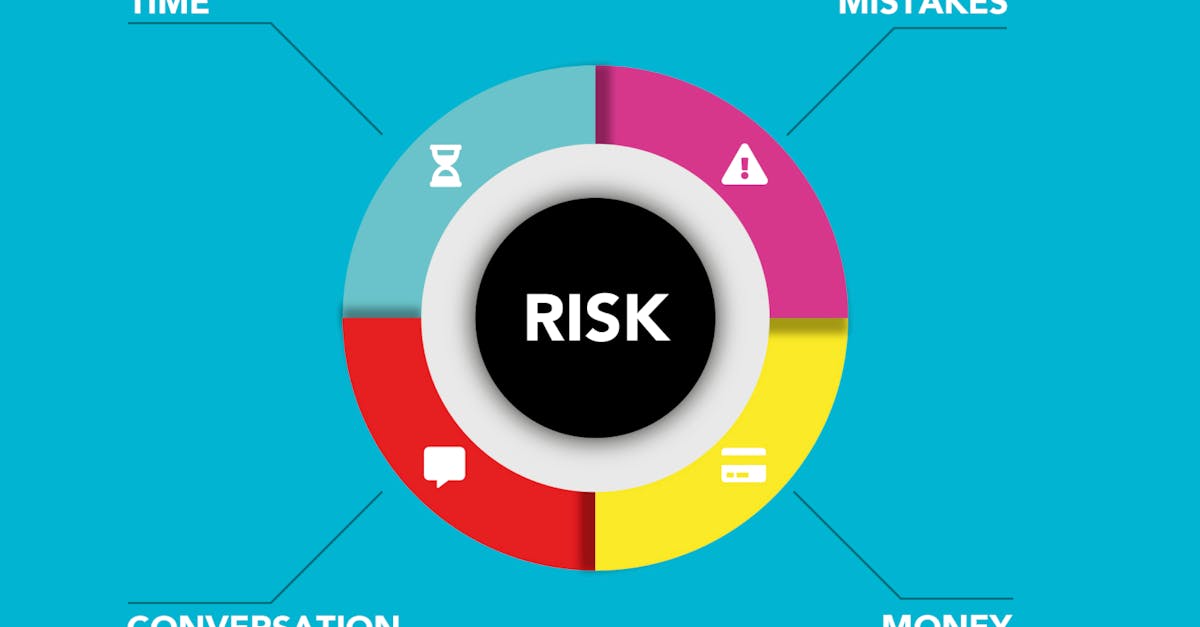
Table Of Contents
Identifying Risks
Identifying Risks
Identifying risks is a crucial step in the risk management process. By proactively recognising potential threats and opportunities, businesses can better prepare for uncertainties that may impact their objectives. When looking into Risk Management near me, it's essential to involve key stakeholders from various departments to provide diverse perspectives on potential risks. This collaborative effort ensures a comprehensive evaluation of both internal and external factors that could hinder or benefit the organisation's operations. In addition, conducting regular risk assessments allows businesses to stay agile and responsive in rapidly changing environments, helping them to anticipate and mitigate potential pitfalls before they escalate into significant issues.
Conducting a Risk Identification Workshop
Conducting a Risk Identification Workshop is a crucial step in the risk management process. This workshop brings together key stakeholders to brainstorm and identify potential risks that could impact the project or organisation. By leveraging the collective expertise and experience of team members, the workshop helps in uncovering risks that might not have been apparent initially. Moreover, engaging in open discussions during the workshop fosters a culture of risk awareness and proactive risk management within the team. For individuals seeking professional guidance in risk management near me, participating in such workshops can provide valuable insights and hands-on experience in identifying and addressing risks effectively.
During the Risk Identification Workshop, it is essential to encourage active participation from all team members to ensure a comprehensive list of potential risks is generated. By creating a safe and inclusive environment for sharing concerns and insights, the workshop enables team members to voice their perspectives and contribute valuable inputs to the risk identification process. Additionally, utilising various risk identification techniques such as brainstorming sessions, SWOT analysis, and risk checklists can aid in systematically uncovering different categories of risks. For those looking to enhance their risk management capabilities or seeking assistance in navigating risk management near me, attending these workshops can be a beneficial avenue for professional development and strategic risk planning.
Assessing Risks
Assessing risks is a critical step in the Risk Management process. It involves evaluating the identified risks to understand their potential impact on the project or organisation. Quantitative Risk Analysis is a commonly used method to assess risks, involving assigning probabilities and monetary values to potential risks. By quantifying risks, organisations can prioritise them based on their likelihood and impact.
Developing Risk Response Strategies is the next phase after assessing risks. Once the risks are evaluated, it is essential to determine the most effective course of action to mitigate or manage them. This may involve transferring the risk to a third party, avoiding the risk altogether, reducing its impact, or accepting the consequences. By developing comprehensive risk response strategies, organisations can better prepare themselves for unforeseen events. Remember, when dealing with risks, always think about the aspect of "Risk Management near me."
Using Quantitative Risk Analysis
In the realm of risk management, employing a quantitative risk analysis approach is crucial in evaluating and prioritising risks. This method involves assigning numerical values to potential risks based on probability and impact, allowing for a more systematic and data-driven assessment. By utilising statistical tools and techniques, organisations can gain a deeper understanding of the likelihood of different risks occurring and the extent of their repercussions. This analytical process empowers decision-makers to allocate resources effectively and focus on mitigating risks that pose the greatest threat to the project or business.
Quantitative risk analysis plays a fundamental role in enhancing risk management practices across various industries. The ability to quantify risks enables businesses to make informed decisions, improve resource allocation strategies, and strengthen overall resilience. By implementing this approach, organisations can proactively address potential threats, enhance their risk response strategies, and ultimately foster a culture of risk-awareness and preparedness. Embracing quantitative risk analysis is essential for companies looking to strengthen their risk management practices and ensure sustainable growth. Risk Management near me.
Responding to Risks
After assessing the potential risks, the next step in the risk management process is responding to them. This phase involves developing risk response strategies to mitigate the impact of identified risks. By proactively addressing risks, organisations can minimise the likelihood of threats materialising and maximise opportunities for success. Whether it involves transferring, mitigating, avoiding, or accepting risks, the key is to have a well-thought-out plan in place to handle them effectively. If you are in need of guidance on this aspect, consider seeking out professional services for Risk Management near me, to ensure that your business is well-prepared to tackle any uncertainties that may arise.
Risk response strategies should be tailored to the specific risks identified during the assessment phase. It is essential to involve stakeholders at all levels of the organisation in the development and implementation of these strategies to ensure buy-in and effectiveness. Clear communication and a structured approach are vital in successful risk response management. By properly addressing risks, organisations can enhance their resilience and adaptability in the face of challenges, ultimately leading to improved overall performance and sustainability. When looking for expert advice on risk response strategies, consider reaching out to specialised professionals in Risk Management near me to get the best support and guidance for your organisation.
Developing Risk Response Strategies
Developing risk response strategies is a crucial component of effective risk management near me. Once risks have been identified and assessed, it is essential to determine the best course of action to address them. This involves evaluating the probability and impact of each risk and devising appropriate responses tailored to mitigate or eliminate the negative consequences they might pose. By developing comprehensive risk response strategies, organisations can proactively minimise potential threats and maximise opportunities for success.
Furthermore, implementing risk response strategies requires a collaborative effort involving key stakeholders and decision-makers. It is important to communicate the identified risks and proposed responses effectively to ensure alignment and understanding among all parties involved. By fostering open communication and engagement, organisations can foster a culture of risk awareness and responsiveness, enabling them to adapt swiftly to changing circumstances and enhance their overall risk management capabilities.
FAQS
What is the first step in the risk management process?
The first step in the risk management process is identifying risks.
How can risks be identified in a project or business?
Risks can be identified through various methods such as conducting a risk identification workshop where stakeholders brainstorm potential risks.
What is the purpose of assessing risks in risk management?
Assessing risks helps in understanding the likelihood and impact of each risk on the project or business.
How can quantitative risk analysis be used in the risk management process?
Quantitative risk analysis involves assigning numerical values to risks to prioritize and address them effectively.
What is the final step in the risk management process?
The final step in the risk management process is responding to risks by developing appropriate risk response strategies.


